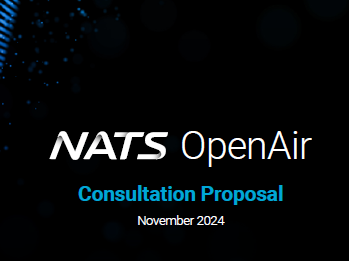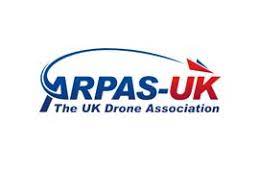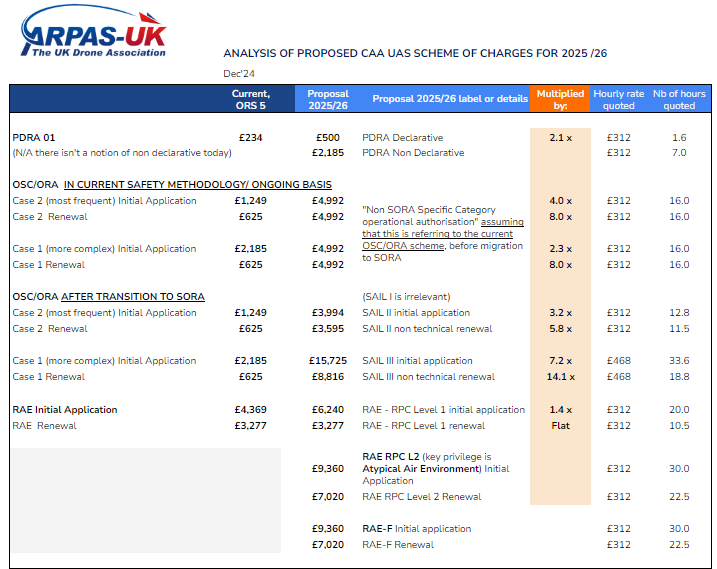

CEO Anne-Lise Scaillierez and ARPAS-UK Director David Thurston hosted the first live-streamed Fireside Chat, discussing the CAA’s announcement to delay significant changes to the UK PDRA-01.
Live Chat was available during the stream to Subscribers of our YouTube Channel
If you would like to read ARPAS-UK’s official Statement on the CAA’s announcement regarding PDRA-01, please find it here.
3 February 2025

ARPAS UK welcomes the Civil Aviation Authority’s (CAA) announcement regarding the postponement of significant changes to UK PDRA-01. The decision to maintain the current iteration of PDRA-01 until 31 March 2026 demonstrates an understanding of the industry’s need for stability during the introduction of UK SORA (Specific Operations Risk Assessment).
DiSCO, the digital platform for PDRA01 applications, was a success, and the community recognises it. There is no value in another cycle of changing regulations and format with no benefit in terms of operating envelope, and following a new methodology that has not been tested yet with the OSC/ORA holders.
In December 2024, ARPAS UK highlighted concerns to the CAA regarding the transition to the SORA methodology and advocated for “no impact, no change” on existing PDRA-01 operations. We are pleased to see the CAA addressing these concerns and delaying immediate changes, allowing operators to continue their activities without disruption.
Feedback from the EASA IAM Forum in October 2024 highlights the low adoption rates of SORA-based PDRAs and Standard Scenarios in Europe. The EASA PDRAs derived from SORA are notably conservative and impose restrictions far greater than those under UK PDRA-01. They do not adequately meet industry needs and as a result adoption so far is low. The SORA methodology is developed, but its implementation is still a work in progress. It has become clear now that those initial scenarios need rework to become effective tools. A review of UK PDRA01 that would result in an alignment with one of those PDRAs would hinder “business as usual” operations for many UK operators.
While aligning UK operations with the global standards followed by JARUS member countries offers long-term benefits, ARPAS-UK remains concerned about the challenges posed by the transition to SORA:
The current PDRA-01 covers drones up to 25kg, yet many operators fly much smaller, lower-risk drones. ARPAS UK continues to advocate for additional PDRAs tailored to the realities of drone operations, focusing on:
We propose standardised and scalable authorisations, not location-specific, and facilitated through a streamlined, digitised process. These improvements would make low-risk activities more accessible, encouraging more operators to apply for or renew their Operational Authorisations.
As the UK’s trade association for the drone industry, ARPAS UK strongly supports regulation that is both appropriate and proportionate. We believe that relevant and accessible authorisations will encourage operators to remain within the regulatory framework, promoting industry growth and maintaining high safety standards.
By continuing to engage with the CAA and advocating for sensible regulatory solutions, ARPAS-UK aims to ensure that the UK drone industry thrives under a system that balances safety with operational practicality.

The UK Civil Aviation Authority (CAA) releases their latest CAA Future of Flight update this month, providing a PDRA-01 update and highlighting key milestones for 2024.
Topics include:
Read the full CAA’s Future of Flight update below.
20 January 2025

ARPAS-UK member heliguy™ has been granted Operational Authorisation by the CAA (UK Civil Aviation Authority) to perform BVLOS (Beyond Visual Line of Sight) drone-in-a-box missions, in atypical air environments, using the DJI Dock ecosystem.
heliguy™ plans to use the authorisation as a framework for delivering automated and remote solutions for enterprise organisations. The approval enables the heliguy™ team to use both the DJI Dock 2 and the original DJI Dock, in non-segregated airspace.
Missions will be managed by their pilot team, either from the Remote Operations Control Centre (ROCC) at their headquarters or via the their Drone Command Unit.
This authorisation was awarded following successful BVLOS flights conducted at Komatsu’s Smart Construction facility in northern England.
19 December 2024

Access the consultation HERE. Below is our draft response (will evolve until 6 Jan) which can support you in drafting your own response. UAS / Drone operators in the Specific Category (PDRA01, OSC/ORA holders): you MUST respond to the CAA Service Charges consultation by 6 Jan 2025.
Go to Section 3: Charging proposals by individual scheme
For your information, the table below summarizes our analyses of the proposed changes to the CAA Service Charges:

We profoundly disagree with the proposed changes to the Remotely Piloted Aircraft Systems (RPAS) Scheme. These proposals are disproportionate, unfair, and lack adequate justification.
The proposed increases are excessive and do not align with the principles of fairness or proportionality:
The current hourly rates are excessive, far exceeding the fully loaded cost of a drone operator’s accountable manager – and probably of your own team’s wages.
How do you calculate those hourly rates? What is your proportion of overhead?
£312 per hour x 1800 hours a year = £561 600 per year
£468 per hour x 1800 hours a year = £842 400 per year
Operators also face a lack of transparency and visibility regarding the maximum hours billed, effectively giving the CAA a “blank check.”
Needless to say that the Price Increase Table (p. 44) indicating 5.9% overall increase for RPAS is extremely misleading. The reality, as detailed above, is that charges would be multiplied by several factors compared to last year.
We’ve stated several times that the unintended consequence of complex regulation is that people eventually give up, they don’t try and understand, they eventually mind their own business in the Open Category, outside of direct CAA oversight, and where the risk of being caught by the police for illegal flying is minimal.
Increase in CAA Service Charges in that proportion will likely undermine safety and increase non-compliance.
If we consider the proposed Service Charges together with the transition to SORA:
There is no doubt that the proposed charges represent a clear threat to the sector’s growth and possibly economic viability.
It also raises serious concerns on the cost of compliance for the next steps, flightworthiness, product assessment RAE-F, and beyond the first steps of UTM. Are the cost of a full-blown complex regulatory approach compatible with the size and resources of the UK CAA and the UK industry? Clearly, the financial aspect MUST be factored into the decision-making process on regulation.
Finally, it raises the question of the regulatory approach that the CAA wants to embrace: FAA style where the cost of a Part 107 (equivalent to PDRA01) is $150, and the innovation approach is overall pragmatic? Or a European style, cascading the full SORA methodology with all its complexity from the “regulators think tank”, JARUS, straight to the local survey/construction/mapping/filming companies?
You can also add a comment in Section 2: Overview of charging proposals. Do you have any comments relating to the proposals linked to changes in our regulatory perimeter?
“See in Section 3 our response relating to the proposed changes for the Remotely Piloted Aircraft Systems Scheme and the exorbitant charge increases.”

Welcome to CHIRP Drone FEEDBACK Edition 12.0
I hope you have had a good summer’s drone flying, whether for pleasure or professionally. Statistics
from the Regulator indicate that the number of flyers continues to increase, albeit perhaps at a
lower rate than before. However, there are a growing number of drones in the air, and economically sustainable use-cases continue to be developed in the professional market. Diverse use cases involve different aircraft variants that perform very different functions. All of them bring along different human/computer system interface risks to the party. Each of them have unique Human Factor related challenges. A couple of good examples are described in this edition!
Since CHIRP Edition 11, there have as ever been some excellent new regulatory and technical innovations
in the world of drones. These include announcements about the Atypical Air Environment; plans for
implementation of SORA 2.5 in 2025; as well as a new subscriber-based digital fight approval service, which aims to reduce administration time for managing requests to landowners for take-of and landing requests. Airports adopting this include Aberdeen, Southampton, Cambridge and a combined Oxford Airport and Blenheim Palace. Encouraging though this may be, we continue to collect evidence of good old traditional Human Factors having as much influence on day-today flying and learning, as ever!
Let’s look at several recent examples and see what conclusions we can draw.
PS it can’t go without a mention that winter is of course approaching once more! Watch out for the HF consequences of lower temperatures, fog, snow and frozen fingers!
Rupert Dent
CHIRP Drone / UAS Programme Manager